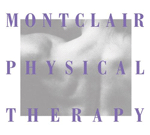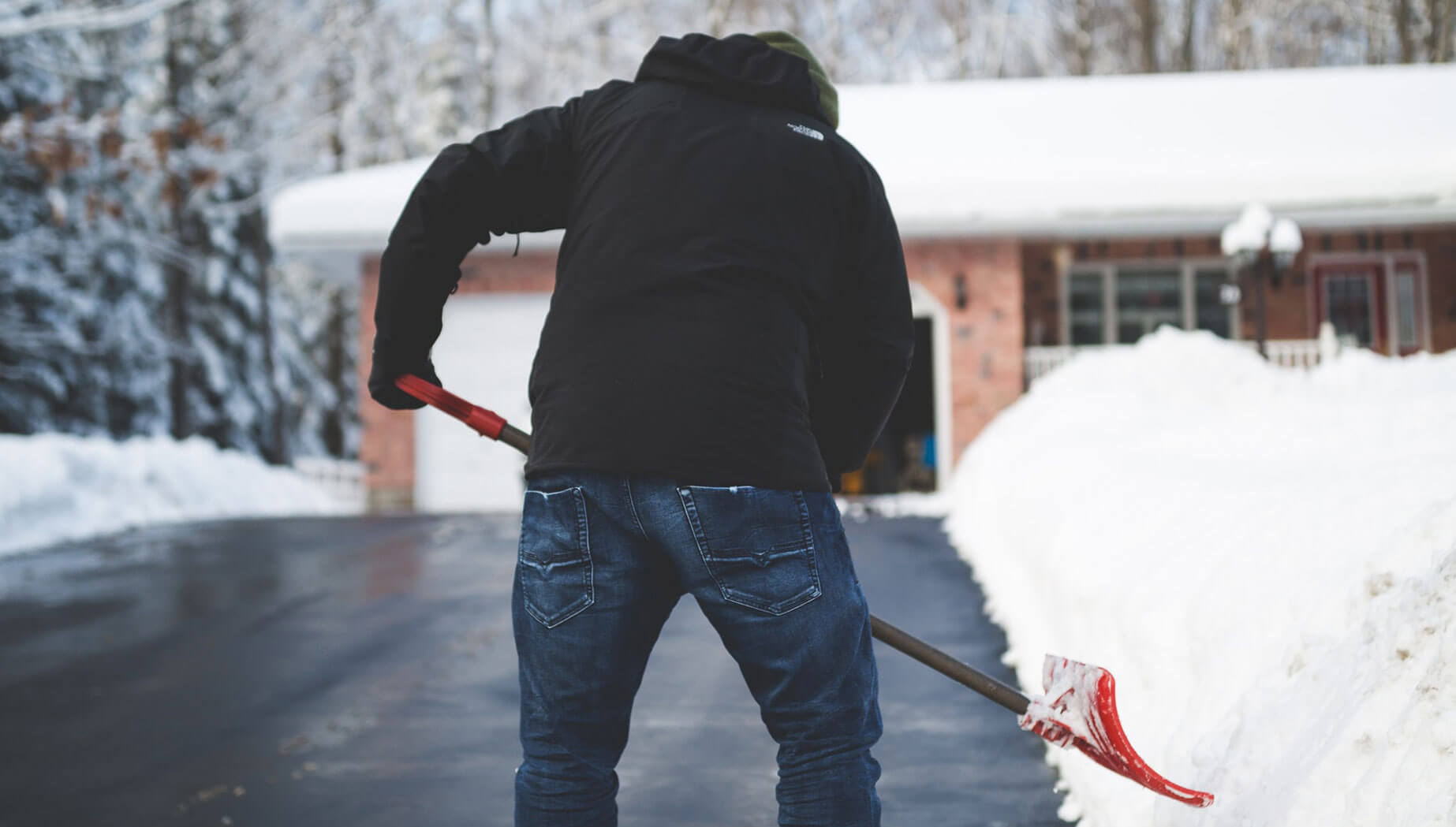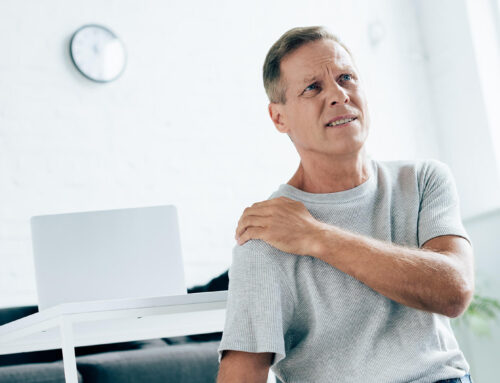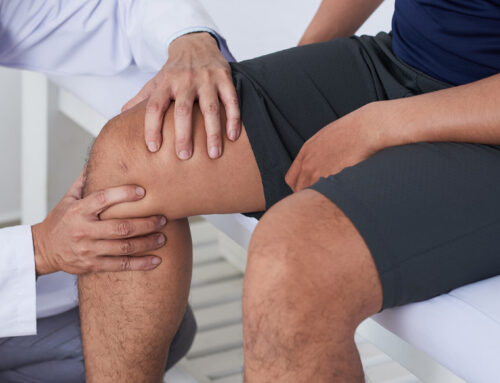Is your back achy and stiff as a result of winter chores? Do you risk sciatica on top of a stormy, slushy mess?
Try to prevent back pain & sciatica with some simple information & tips.
If we can predict a pain episode, we can likely prevent it. If you’re feeling an ache in your back after clearing snow from the recent storms, this sensation may be a precursor — think of it as a warning signal — of a full-blown back pain or sciatica episode. The information below may help you.
What’s going on here?
- We’ve been back to work for six months since the active warm-weather months – commuting, sitting at desks, sitting in meetings, sitting on planes.
- We’ve also been sitting socially — at dinners, at parties, in cars, around the fire — since Thanksgiving.
- With a few snowfalls now, we add the stress of shoveling to the 4,000-6,000 times a day we bend forward.
- Your spine is most vulnerable upon waking in the morning. Because the intervertebral discs do not have a significant blood supply, they get their nutrition from the imbibation of fluid. When standing or walking, the spine is more compressed and cannot absorb fluid efficiently. When lying down, the discs are not compressed and are able to absorb large amounts of fluid. Upon rising after a night’s sleep, there is a much higher volume of fluid in the discs, resulting in increased pressure. Studies show that avoiding excessive forward bending first thing in the morning results in a significant decrease in frequency, intensity and duration of back pain (Snook et al, 1998). For the first 2-3 hours after waking, it is advisable to avoid excessive forward bending, maintain the natural arch in your back (lordosis), and perform 10 back bends or press ups 1-2 times.
In fact, there is very good evidence for backward bending as a general preventive measure for low back pain for most people. For those requiring more specific instruction, at least 10 back bends every 1-2 hours, more frequently if you are shoveling snow; take frequent breaks (every twenty minutes, stop and stretch backwards), and interrupt your sitting every 45-60 minutes. If traveling by car, pull over safely to stop for a few minutes and do your backbends. If travelling by plane, get up from your seat and walk to the back of the plane or the galley area to bend backwards. When you reach your destination, your spine will thank you.
Please contact our office with questions or concerns regarding safety tips on navigating the winter months, or to schedule an appointment.
References:
Health information provided is not intended as specific medical advice to an individual. Contact us at Montclair Physical Therapy for your personalized evaluation.




